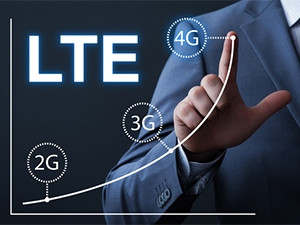
South Africa, with six commercially launched long-term evolution (LTE) networks, has the highest number of networks in Africa, followed by Ghana, Nigeria and Uganda, which have four networks each.
That's according to the Global Mobile Suppliers Association (GSA), which recently analysed global mobile subscriptions for Q3 2015.
The six South African operators which have deployed LTE are Vodacom, MTN, Cell C, Telkom, Neotel and Afrihost.
At Q3 2015, there were 4.75 million LTE subscriptions in Africa, an increase of almost a million from the previous year, says GSM.
It adds the first LTE networks were commercially launched in Africa in 2012. That year, nine networks were launched; in 2013, nine were also rolled out; in 2014, 15 launched; and in 2015 (to Q3) 16 launched.
By Q3 2015, 49 LTE operators were offering commercial LTE services in 23 countries across the continent and supporting 4.75 million subscriptions, representing annual growth of 109%.
GSM notes 2015 has witnessed more launches than in previous years, as LTE deployments expand as the dominant 4G mobile broadband technology of choice worldwide.
Gathering pace
Globally, GSM says LTE subscriptions continue faster growth than any other mobile communications system technology. LTE gained almost 152 million connections in Q3, which was 83% more than 3G/HSPA systems. The number of GSM subscriptions fell 117 million in the quarter.
GSA notes the global number of LTE and LTE-Advanced subscriptions reached 908.5 million by 30 September 2015. The number of LTE subscriptions grew by 151.7 million in Q3 2015.
"LTE technology is now being used by one in eight mobile subscriptions by end September 2015, says Alan Hadden, VP of research at GSA. "The rate of LTE subscriptions growth has accelerated sharply. The first billion subs for LTE has probably now been reached."
Asia-Pacific further grew its share of global LTE subscriptions to 53.3%. North America remains the second-largest LTE market, with 219 million, though its share further declined to 24.1% of the global total compared with 29% only six months earlier, says GSM.
European shares remained in the mid-teens (15.2%). The number of LTE subscriptions in Western Europe has now passed 115 million, it adds.
Strong growth was again seen in the Latin America and Caribbean region, which now has 36 million 4G/LTE subscriptions and almost 28 million higher than a year ago, equivalent to 346% annual growth. A strong performance for LTE was again noted in the Middle East, where more than one million LTE subscriptions were added monthly. The region has 25.7 million LTE subscriptions and an annual growth of 144%. Russia now has over 10 million LTE subscriptions, representing 119% annual growth.
By September 2015, China had passed 302 million LTE subscriptions, 77 million in Q3 alone.
About 442 operators had commercially launched LTE systems in 147 countries, according to GSA data announced in mid-October 2015. It forecasts there will be 460 commercially launched LTE networks by end 2015.
LTE-Advanced
According to GSA, LTE-Advanced deployments have taken hold in all markets around the world. Almost one in three operators are investing in LTE-Advanced system deployments, with the commercialisation of carrier aggregation the first feature to be exploited.
Over 21% of all LTE operators (97) have commercially launched LTE-Advanced services in 48 countries.
Fourteen LTE-Advanced networks support Category 4 devices (above 100Mbps up to 150Mbps peak downlink speed), while 78 networks support Category 6 devices (above 150Mbps up to 300Mbps), four networks supported Category 9 (above 300Mbps up to 450Mbps), and one Category 11 network (above 450Mbps up to 600Mbps) has also been commercially launched.
The number of LTE and LTE-Advanced subscriptions is expected to pass the 3G/WCDMA-HSPA global total in 2020.
Share